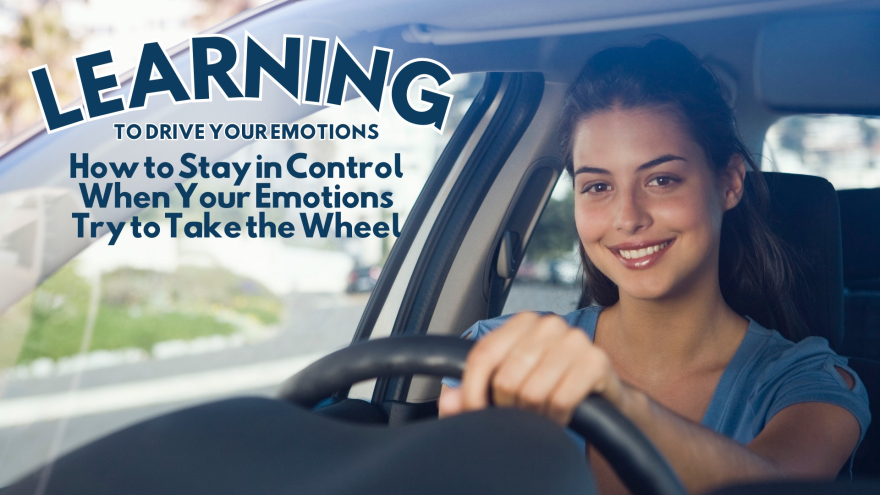|

Hi Coco,
Do you remember the first time you got behind the wheel of a car? How you double-checked your mirrors, adjusted your seat, and placed your hands perfectly at 10 and 2? All while your heart raced with anticipation and a little bit of fear?
When I started driving, every movement—pressing the gas, tapping the brake, checking blind spots—felt like a major decision. It wasn’t just about handling the car; I was also trying to manage my nerves. My hands were sweaty, my heart pounded, and every turn felt like a test.
But over time, something clicked. What once felt overwhelming eventually became second nature. I could merge onto the freeway without holding my breath, navigate winding roads confidently, and even arrive at my destination without consciously thinking about every move.
That’s the incredible power of our brains. They’re wired to learn and adapt, turning new skills into habits through practice and repetition. It’s called neuroplasticity, and it’s the reason we can go from gripping the wheel with white knuckles to cruising with ease.
When you're in the driver's seat, you're in control. It's a pretty awesome feeling—you can direct a multi-ton vehicle to any destination. What if we could harness that same sense of power when it comes to our emotions?
One of the first things we learn as drivers is to recognize a STOP sign. That quick pause keeps us safe on the road—and the same is true for our emotions. When we start noticing our own internal STOP signs, we can slow down, assess the situation, and choose how to move forward instead of reacting on impulse.
So, how do we shift into the driver's seat of our emotions? Did you know our bodies warn us before our minds fully register that our emotions are about to take over? So, our first step is to recognize those internal cues that nudge us to pay attention to the STOP signs.
Maybe it’s when your toddler dumps a whole cereal box on the floor just as you need to leave the house. Or when your pre-teen rolls their eyes for the third time during a simple request. Maybe it’s that moment when homework becomes an hour-long power struggle, and you can feel your patience slipping.
Where do you feel it in your body when those things happen? What are your warning signs? For me, it was always in my throat or my neck and shoulders. For you, it might be a tightening in the chest, a racing heart, or clenched fists. These physical sensations are early warning signals—our body's way of telling us that we’re about to react.
These are our internal STOP signs—moments when we need to pause before emotions take the wheel. Most of us have a handful of triggers, which often fall under the three D’s: Disrespect, Disobedience, and Dysregulation. Identifying your triggers ahead of time can help you discover the internal cues your body sends you. Once you’ve recognized them, you can take the next step by following a simple but powerful framework called STOP.
It’s a practical, step-by-step process that helps us slow down, take a breath, and choose our next move mindfully—one that aligns with our values and goals as parents.
The STOP Technique
The next time you receive an internal cue…
-
S: Stop – Stop what you’re doing—just pause.
-
T: Take a Breath – Take a slow, deep breath. Focus on the inhale and the exhale.
-
O: Observe – Check in with yourself. What are you feeling? What thoughts are coming up? What’s happening around you? Just notice, without judgment.
-
P: Proceed Mindfully – Now that you’ve paused and gathered yourself, choose your next step with intention.
This technique creates a buffer between a trigger and your reaction, allowing you to steer things in a more positive direction.
I’ve seen firsthand how powerful this small but intentional pause can be—not just in my own life but in the lives of the parents I coach. Claire (name changed for privacy) shared how practicing this simple technique transformed her relationship with her son.
She said, “It made all the difference in my relationship with my son; we are much more connected now. He comes to talk to me more, and I have noticed he is regulating his emotions more and more. I saw him take deep breaths when he was feeling triggered. Such a huge victory!”
Moments like these remind me that when we take the time to model emotional regulation, our kids notice. And they will follow our lead.
I’ve worked with many parents who feel like they’re constantly being pulled out of the driver’s seat by their emotions. I get it. I’ve been there too. I know what it feels like when your buttons are pushed and you lose it. Many parents think it’s something that will never change.
At first, driving felt overwhelming—even impossible. But with time and practice, it became second nature. The same is true for managing our emotions. With practice and repetition, we can shift from feeling out of control to confidently taking the wheel.
That’s why I love sharing tools like the STOP technique—not because it makes everything perfect, but because it gives us our power back. It offers us a chance to respond with intention rather than reacting on autopilot.
Learning to drive took practice, and so does learning to manage our emotions. This is just one more tool that’s easy to remember, and hopefully, it will encourage you to use it often. The more you S.T.O.P., the more natural it becomes. With time, you will pause and respond thoughtfully, even in the most challenging moments!
If you're ready to step into the driver’s seat of your emotions and create more calm in your home, let’s talk. Click here to set up a time to connect. I’d love to support you on your parenting journey.
With love and respect,
Coco
|